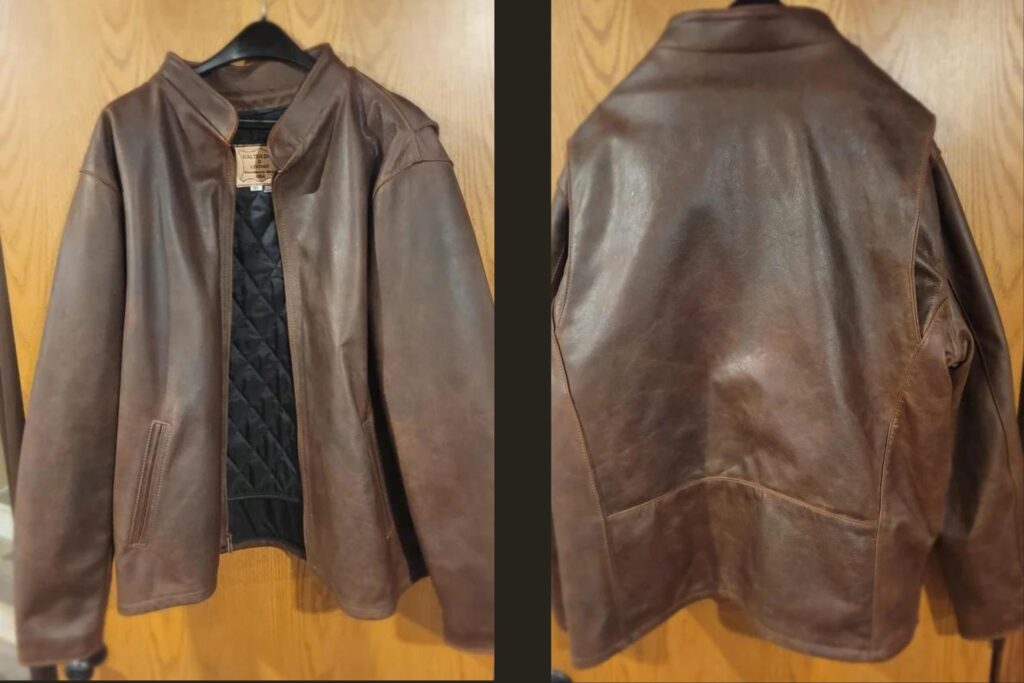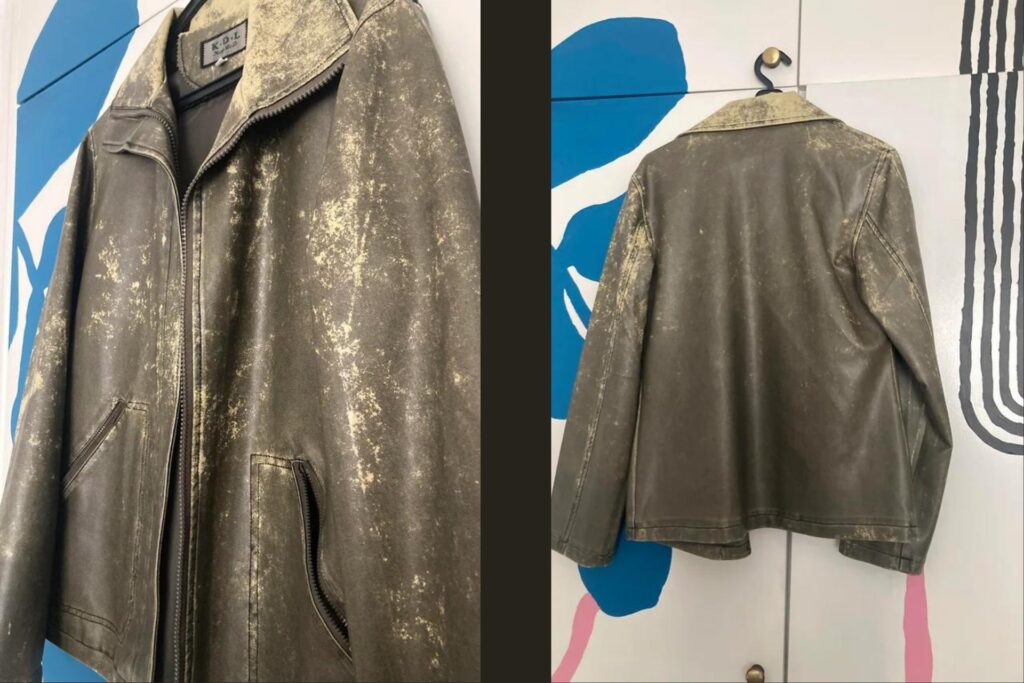Distressing a leather jacket is a great way to give it a unique and vintage look. Whether you’re looking to add some character to a new jacket or revive an old one, there are several methods you can use to distress leather. As someone who’s been experimenting with leather jackets for years, I’ve found a few techniques that work well and can be done easily at home.
One of the easiest ways to distress a leather jacket is by using rubbing alcohol. Simply apply a small amount of rubbing alcohol to a cloth or spray it onto the leather and rub it in. This will cause the leather to dry out and take on a worn appearance, making it look like it’s been through some adventures. Another great way to distress leather is by using sandpaper. Gently sanding the leather will create a rougher texture and give it a more rugged look.

It’s important to note that not all leather can be distressed. Full-grain and top-grain leather are the only types that can be distressed as they have the tightest fibers and are very durable. Suede and genuine leather have looser fibers compared to the latter, and it’s not recommended to distress them as their fibers can easily break and significantly weaken the item. With that said, if you have the right type of leather jacket, distressing it can be a fun and rewarding project.
How To Distress A Leather Jacket?
There are a few techniques that you can use to achieve that vintage, worn-in leather jacket look. Here are some of the most effective distressing methods that I have used:
1. Using Sandpaper
One of the easiest and most common ways to distress leather is by using sandpaper. Start by lightly sanding the areas of the jacket that you want to distress, such as the collar, cuffs, and pockets. Use fine-grit sandpaper to avoid damaging the leather. You can also use a sanding block to make the process easier.
- 4-in-1 sand block
- Four profiles- flat, convex, concave, and a tight edge
- Change from coarse to fine grit in seconds with the quick-snap sand paper lock
- Works with any quarter sheet of sand paper in any grit
2. Using a Wire Brush
Another way to distress leather is by using a wire brush. This technique is particularly effective for creating a textured, worn-in look. Use a wire brush to gently scrape the surface of the leather in the areas where you want to distress it. Be careful not to apply too much pressure, as this can damage the leather.
- Soft Grip Stainless Steel Stripper Brush, 5×11 rows, lableled, 12/Cut Carton
- We call it the Warner Way. We’re SMARTER, STRONGER AND BETTER at making tools and giving…
- Our tools are made to last by a skilled team of hard-working men and women who take pride…
3. Using Alcohol

Alcohol is another common ingredient used to distress leather. You can use rubbing alcohol to create a weathered, faded look on your leather jacket. Simply dampen a cloth with rubbing alcohol and rub it over the areas of the jacket that you want to distress. Be sure to let the alcohol dry completely before wearing the jacket.
4. Using a Leather Conditioner
Finally, you can use a leather conditioner to distress your jacket. Apply a small amount of conditioner to the areas of the jacket that you want to distress, and then use a soft cloth to rub it in. This will help to soften the leather and create a more natural-looking distressed effect.
How To Care For Your Distressed Leather Jacket
After distressing your leather jacket, it’s important to take care of it properly to ensure it lasts for years to come. Here are some aftercare tips to keep in mind:

Cleaning After Distressing
Once you’ve distressed your leather jacket, you may notice that it’s become a bit dirty or dusty. To clean it, use a soft, dry cloth to wipe away any dirt or debris. If you need to remove any stains, use a leather cleaner that’s specifically designed for distressed leather. Be sure to test the cleaner on a small, inconspicuous area of the jacket first to make sure it doesn’t cause any damage.
Maintaining the Distressed Look
To maintain the distressed look of your leather jacket, avoid using any harsh chemicals or cleaners on it. Instead, use a leather conditioner that’s designed for distressed leather. Apply the conditioner to a soft cloth and rub it into the leather in a circular motion. Be sure to apply the conditioner evenly, and don’t use too much or it may cause the leather to become greasy.
If you notice any scratches or scuffs on your leather jacket, don’t panic. These can add to the distressed look of the jacket and give it character. However, if you want to minimize the appearance of scratches or scuffs, you can use a leather touch-up kit to cover them up. Be sure to follow the instructions carefully and test the touch-up kit on a small, inconspicuous area of the jacket first.
Final Remarks
In this article, I covered how you can distress your leather jacket in four different ways. You can either use sandpaper, a wire brush, rubbing alcohol, or a leather conditioner.
Each of these methods will give you a different effect, with the most distressing occurring through the use of sandpaper. The least and most natural amount of distressing and aging will come through the use of a leather conditioner.
Depending on the use case and the amount of distressing you want, you can make your own decision about which method to pick for your leather jacket.

My name is Alex Higson and I am the founder of Magic Of Clothes. I have worked in the fashion industry for many years, and clothes and style are a huge part of my life.


